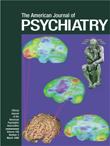This is a short and snappy “how to” book addressed to the primary care physician. The chapters are written by some of the best experts in the area of diagnosing and treating patients with sleep disorders. It is a very useful introduction to how and what to ask when taking a medical history to make sure that sleep problems are not overlooked. It makes a very good case about the number of sleep disorders that are often missed and what the consequences are in escalating the costs of health care as a result of the failure to identify such problems early. The book has more strengths than weaknesses to my mind. On the good side, it fills an important need by making this field accessible to primary care physicians and giving them the tools and confidence to diagnose and treat those cases which do not need specialized help. It also makes clear which patients should be referred to a sleep disorder service and when.
Some of the particularly good chapters are those by Dr. Kripke (“The Uses of Bright Light in Office Practice”), Drs. Pelayo and Guilleminault (“Narcolepsy and Excessive Daytime Sleepiness”), and Dr. Dahl (“Common Sleep Problems in Children”). Most of the chapters have very nice decision tree diagrams to show the steps needed and the order for following up on a clinical presentation.
On the bad side, there is very little on behavioral treatments for insomnia to balance the chapter by Mendelson and Caruso (“Pharmacology of Sleep Medicine”). Although it is recommended that the clinician not first think of a prescription for a sleeping pill as the best answer for a patient’s complaint, it is very easy to do this when the alternatives are not spelled out as clearly as are the doses, half-lives, and side effects of the usual pharmacological agents for inducing sleep. In addition, there is no admonition about the number of bad commercial sleep laboratories that have sprung up and how to find an accredited service in which the clinician can have confidence.
The most unique aspect of the book is the report on the first few years of experience at a clinic following the training of their primary care physicians. It is impressive how quickly these physicians began to recognize and treat the sleep disorder patients in their community. The emphasis here on preventive medicine is a welcome one.
The authors do not oversell the idea that those of us who are in the field of sleep disorders know it all. They are appropriately cautious about home monitoring with self-titrating continuous positive airway pressure equipment as a cheaper solution to diagnosing and treating sleep apnea. They rightly say, “Maybe sometime in the future but not yet.” On the other hand, they point out how much can be learned from actigraphy and sleep logs, which are inexpensive indicators of how the subjective complaint matches objective sleep-wake data.

